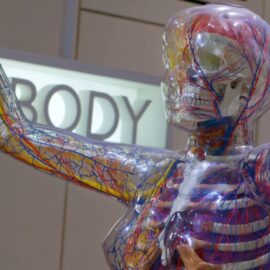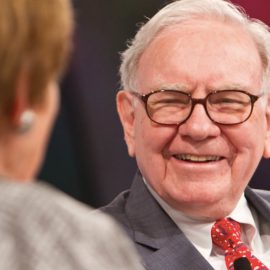

This article is an excerpt from the Shortform book guide to "The Monk Who Sold His Ferrari" by Robin Sharma. Shortform has the world's best summaries and analyses of books you should be reading.
Like this article? Sign up for a free trial here .
Who is Julian Mantle in The Monk Who Sold His Ferrari? How does the attorney end up becoming a monk?
Julian Mantle is the main character in The Monk Who Sold His Ferrari by Robin Sharma. After a heart attack, Julian has a wake-up call and gives up his stressful life.
Read more about the story of Julian Mantle from The Monk Who Sold His Ferrari.
John and the Great Julian Mantle
Julian Mantle is a very successful, famous, and wealthy lawyer. He seems to have it all: a mansion, expensive Armani suits, a private island, and his prized red Ferrari.
However, the stress of Julian’s job wears him down. He continually takes on more and more work, and never finds time to relax. He’s a perfectionist who tries to think of, and cover, every remote possibility before going to trial. Eighteen-hour work days are common for him and John, his intern. Julian Mantle copes with the stress of his job by eating, smoking, and drinking too much. His unhealthy lifestyle has made him fat, and he looks older than he is.
By the time the story begins, Julian is losing his passion, his energy, and his focus. Instead of the brilliant legal arguments he built his career on, he often falls back on rambling, half-related stories and precedents. This is a sign that his mental health is declining along with his physical health.
One day, Julian has a heart attack and collapses mid-trial. While in the hospital, he decides that he no longer wants to practice law. After recovering, Julian sells off most of his material goods for a fraction of their value. He takes what little he has left and goes to India to look for guidance in his life.
The Return of Julian Mantle
Julian is away for over three years, and he makes no contact with his old associates during that time.
While he’s gone, John gets older and more jaded. He develops a nasty temper and a habit of worrying about things he can’t change. In spite of that, he settles into a decent middle-class life; not as extravagant as Julian’s old life, but comfortable.
John’s great love in life are his children. He says that, after having kids, the way he viewed the world and his place in it changed—his secure, middle-class life wasn’t enough anymore. John began to search for meaning in his own life, but without much success.
One day Julian appears at John’s office without warning. He’s now fit, healthy, and happy, and looks decades younger than he did before his heart attack. The transformation is so extreme that John doesn’t recognize him at first.
Julian settles in and tells John that his heart attack had been a symptom of his broken spirit, the cause of which was his unbalanced lifestyle. His doctor had warned him that if he kept practicing law, the stress would soon kill him. Julian saw an opportunity to reinvent himself and find his passion again, which was why he left for India so suddenly.
John asks whether it was hard to give up everything and leave, to which Julian replies that it was the easiest thing he’d ever done. As Albert Camus said, “Real generosity toward the future requires giving all that you have to the present.” Julian took that quote literally and gave up everything to seek his new life.
Julian begins to tell John about his travels.
The Missing Years and His Time in India
Julian had traveled through India, often on foot, seeking teachers and guidance. The monks and learned people Julian talked to were interesting, but did not have the answers he was looking for. After seven months of wandering, Julian wound up in Kashmir and met a Yogi named Krishnan.
Krishnan was another former lawyer who got tired of the constant stress and overwork. Much like Julian, he gave up everything to seek new meaning in life. Eventually, Krishnan realized that his purpose is to serve others and make the world better. He was now the caretaker of a small local temple, where he had come to know himself and his place in the world.
Julian told Krishnan about his greed and tendency to overwork himself. He shared how his unbalanced lifestyle had begun to damage his spirit, eventually leading to a heart attack.
Krishnan understood him completely, and offered this wisdom: Everything happens for a reason. Every setback is a lesson, and every failure is a chance to grow. Do not regret your past, but learn from it. Do not fear failure, but embrace it as a teacher. The only true failure is failing to try.
His advice resonated deeply with Julian, who believed that he had finally found the teacher he was looking for. He asked if he could stay and learn from Krishnan. However, the Yogi replied that he was happy to help however he could, but that Julian would be better off looking for the Sages of Sivana.
The Sages are a near-mythological group of monks who are supposed to have the keys to health, longevity, and happiness. They live high in the Himalayas, where it is dangerous for even experienced climbers to explore, and many people have died trying to find them. Krishnan would have gone himself to look, but by the time he learned about them he was too old to make the climb.
Despite the danger, JulianMantle set out the next day to look for the Sages. He went without a Sherpa guide, guided by a feeling that this journey was meant for him alone. Despite Krishnan’s warnings about the danger, Julian somehow knew he would be safe and would find what he was looking for.
After a week traveling alone through the mountains, Julian found another traveler dressed in a strange red robe with a blue hood. The man was at least as old as Julian, but his skin was perfectly smooth and he had the energy of a man half his age. His eyes were especially striking, so clear and penetrating that Julian couldn’t meet them.
Julian suspected that this stranger was a Sage of Sivana. He repeated the same things about himself that he had told Krishnan the week before. He ended by saying that he was looking for inner harmony and peace.
The man finally replied that he was indeed a Sage, and that they could teach Julian. He added that nobody had found the Sages in many years, and praised Julian’s tenacity. He invited Julian to come back with him, as a guest and a student.
However, the monk said they would teach Julian on one condition: He must take what he learns back to his homeland and share it with as many people as possible.
Julian Mantle readily accepted. He knew that this was the starting point of his new life.

———End of Preview———
Like what you just read? Read the rest of the world's best book summary and analysis of Robin Sharma's "The Monk Who Sold His Ferrari" at Shortform .
Here's what you'll find in our full The Monk Who Sold His Ferrari summary :
- Why your career success might actually be killing you
- How to live a simple and fulfilling life
- The 10 rituals you should practice for health and healing







very nice information. God bless you
very nice info